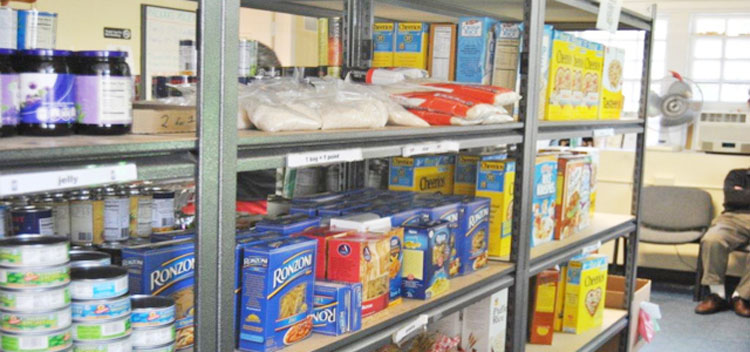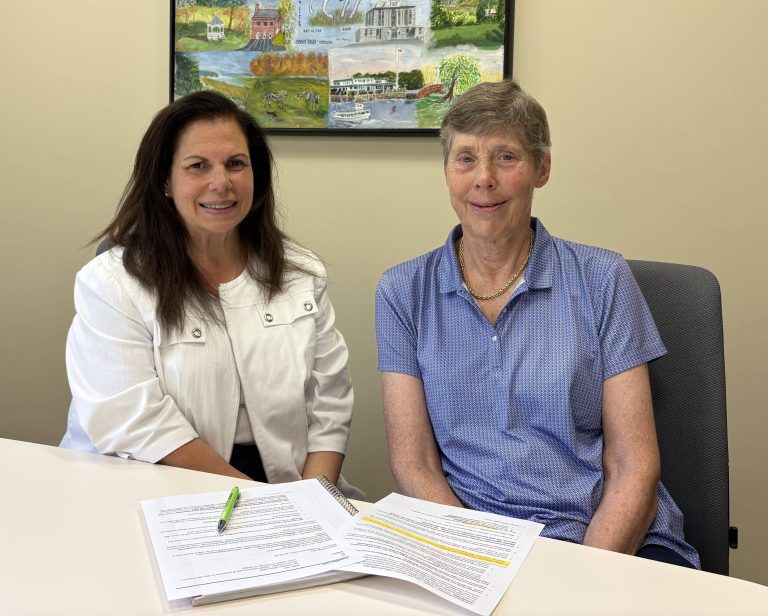
By Chéye Roberson
Sentinel Correspondent
The Great Recession may have ended, but families are still struggling to stay out of poverty. Nancy Coughlin, executive director of Neighbor to Neighbor, said that although the employment rate may have risen, people are not getting the kinds of jobs that allow them to sustain themselves without outside help.
“Since the recession, we’ve grown about 1-2 percent a year. This past year, we had a 4 percent increase,” said Coughlin while sitting at her desk amid boxes of paper work. Coughlin’s office reflects the constant flurry of activity at Neighbor to Neighbor, a non-profit organization based out of the lower level of Christ Episcopal Church.
“We were hoping demand would go down as the economy kind of recovered and things got better, but it didn’t,” said Coughlin. “I really think what’s happening is that the jobs that have been created since the recession are not the kinds of jobs that are getting people out of poverty.”
One in six individuals struggle with hunger and 17 percent of Greenwich residents work but cannot make ends meet without public or private assistance. Neighbor to Neighbor went from serving 321 families in 2001 to serving 660 families today, and from 47,000 meals annually to 325,000. The mission of Neighbor to Neighbor is to keep families, children, and seniors in Greenwich healthy and strong by providing food, clothing and basic living essentials in an atmosphere of kindness and respect.
Although Neighbor to Neighbor’s focus remains Greenwich families, a small portion of help goes to families who have been referred to Neighbor to Neighbor through social service programs in Stamford and Port Chester.
Neighbor to Neighbor has been a trend-setter for other pantries in the area. The food pantry is equipped with little isles and shopping carts for families to take around and pick out what they want to bring home. The idea that families can shop for themselves is called “client choice,” and Neighbor to Neighbor was the first pantry to establish this way of doing things in Fairfield County. When the families first enter, they grab a menu and a shopping cart. The menu tells the family how many points they have to “spend” in the pantry.
“Everything is free, but we use a point system to determine how much each family can get,” said Coughlin.
After clients are done shopping, baggers pack up the food at the checkout desk. If the pantry has enough volunteers, they also carry groceries out for clients.
“We were the first client choice pantry in the area, and we still have other pantries come to us to see how we do it to set up their pantries,” said Coughlin. “It’s becoming almost mandatory. All food pantries are expected to move towards this institution because it is the most dignified way to distribute food.”
Coughlin said there are many reasons why this approach is considered the best experience for client families besides mimicking the traditional shopping experience.
“It accommodates dietary restrictions, accommodates religious restrictions—we have clients who keep kosher,” said Coughlin. “We have clients who are gluten free. Unfortunately, we can’t always accommodate a gluten-free diet, but at least clients know they can pick for themselves what food they can and can’t eat. So, it’s really the gold standard. And we’re proud we were the first to do it.”
The food pantry intends to provide three days’ worth of food for each member of the family. Neighbor to Neighbor is adamant about helping families receive healthy and balanced meals. In the beginning of the point system, they had a dietician come in and determine what a family would need to have a nutritional diet.
“We had a nutritionist design the point system, so that’s where it starts,” Coughlin said. “We had somebody come in and say, ‘If you’re a family of four, how much protein would you need? How much starch would you need? How much fruits and vegetables?’—and design a menu. It starts with identifying what is needed for a healthy diet. Then we use the resources we have to provide those foods. And the point system makes sure the family gets the right amount of everything.”
Neighbor to Neighbor also helps with clothing and bedding donations. The organization has been thanked by many GHS students for helping them secure prom dresses for their big day.
Although Neighbor to Neighbor is there to help feed families, they are not meant to be the main source of food. As with those who receive state benefits, many clients have to make use of multiple assistance programs to live healthily, because the government food stamp, or SNAP, program is often not enough for families to live on.
“There was a time when I was young that if you were getting food stamps—it was a struggle—you had to be frugal, but it was intended to provide enough food for you to live on. But SNAP is a different program, and it’s not intended to be a sole source of food. It’s really intended to be a supplemental food program. So people really need to piece together public benefits and also private help from Neighbor to Neighbor or other food pantries.”
According to Coughlin, the number of food pantries has increased, reflecting the need for extra help despite being employed.
“In 1980, there were 200 food pantries in the U.S.; now there are over 40,000,” said Coughlin. “What’s happened is food pantries in the 70’s were a source of emergency assistance, but now for low-income people they are part of a person’s every day. A lot of people are relying on food pantries.”
The Greenwich community has played a role in helping Neighbor to Neighbor support its clients.
“In summer, we have a lot of community gardeners who grow for us,” Coughlin said. “A lot of the churches, and on Bible Street, in Armstrong Court, there are community growers that grow for us. And then the Old Greenwich Farmer’s Market, all of those farmers donate to us every Wednesday. So in the summer we have a lot of fresh produce. In the winter we don’t have as much variety, but there’s always fresh produce.”
Neighbor to Neighbor is very appreciative of the support, Coughlin said.
“We’re lucky, being in Greenwich, that we have a broad base of support and we’re able to offer a food pantry that has nutritious fruit, fresh produce, milk, bread, and protein. There are a lot of places in the country where the food pantries don’t have that ability to give people nutritious food. So we’re very lucky.”
“About half of the food we give out is donated through food drives and individual donations,” Coughin said. “And the other half we purchase. The bread, the milk, the meat—those are not the kinds of things that get donated in a food drive. So we purchase those.”
Tuna fish and peanut butter and jelly are items that the pantry goes through a lot of, and will purchase from either the Food Bank of Lower Fairfield County or the Connecticut Food Bank because the cost to buy from them is relatively inexpensive.
“And if we can’t source it there, then we will purchase from local grocery stores. They give us discounts,” said Coughlin.
Although the Great Recession lasted officially from December 2007 to June 2009, some experts say we are headed toward yet another recession. According to Bloomberg Business, “The median probability for a U.S. recession in the next 12 months jumped to 19 percent in last month… the highest since February 2013.”
“People that were either struggling before the recession or were doing okay but lost their jobs and started struggling during the recession, they’re just not getting the kind of jobs that are getting anybody out of poverty,” said Coughlin. “They’re low-wage jobs. They’re part-time jobs. A lot of our clients are piecing together two and three jobs. They’re jobs that don’t have benefits. So people are paying for their own insurance, whereas their employer used to pay for their insurance. And they don’t have paid time off.”
According to Coughlin, the employment rate may be going up, but the sustainable living rate remains stagnant.
“Statistically, there may be quantities of jobs when you see job reports and the number of jobs that are created; there may be more jobs, but they’re just not the kinds of jobs that are helping people get back on their feet.”
Financial sustainability is even more difficult in an expensive residential community like Fairfield County.
“Especially in Greenwich and Fairfield County, where housing is so expensive and transportation is so expensive, the cost of living is expensive, and groceries are expensive. It’s an expensive place to live,” Coughlin noted. “We’re really seeing people still struggling. And it’s hard to know what’s going to happen. If it’s going to get better, how much better it will get? But I don’t see any signs of it getting better anytime soon.”




